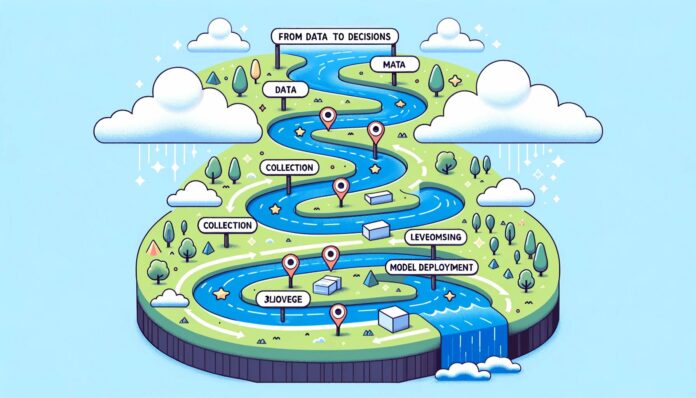Machine learning projects follow a systematic workflow that ensures the effective transformation of data into actionable insights. Here’s a detailed walkthrough of a typical machine learning workflow:
1. Problem Definition
Define the problem you aim to solve. Understand the objective, variables that are available, and the form of the data.
2. Data Collection
Collect the necessary data for your project. It could be from various sources like databases, APIs, or external data providers.
3. Data Cleaning
Clean the collected data by handling missing values, outliers, and erroneous entries.
4. Exploratory Data Analysis (EDA)
Perform exploratory data analysis to understand the characteristics and relationships within the data.
5. Feature Engineering
Create new features or modify existing ones to improve the machine learning model’s performance.
6. Data Splitting
Split the data into training, validation, and test sets to evaluate the model’s performance accurately.
7. Model Selection
Choose the appropriate machine learning model based on the problem at hand.
8. Model Training
Train the chosen model using the training data set.
9. Model Evaluation
Evaluate the model’s performance using appropriate metrics and the validation data set.
10. Hyperparameter Tuning
Tune the model’s hyperparameters to improve its performance.
11. Model Deployment
Deploy the trained and tuned model into a production environment.
12. Monitoring and Maintenance
Monitor the model’s performance over time, and re-train it as necessary to maintain its accuracy.
13. Making Decisions
Leverage the model’s insights to make informed decisions.
14. Feedback Loop
Establish a feedback loop to continuously improve the model based on the new data and feedback.
Following this structured workflow will guide you through the essential steps of a machine learning project, ensuring a systematic approach from data collection to decision-making.
